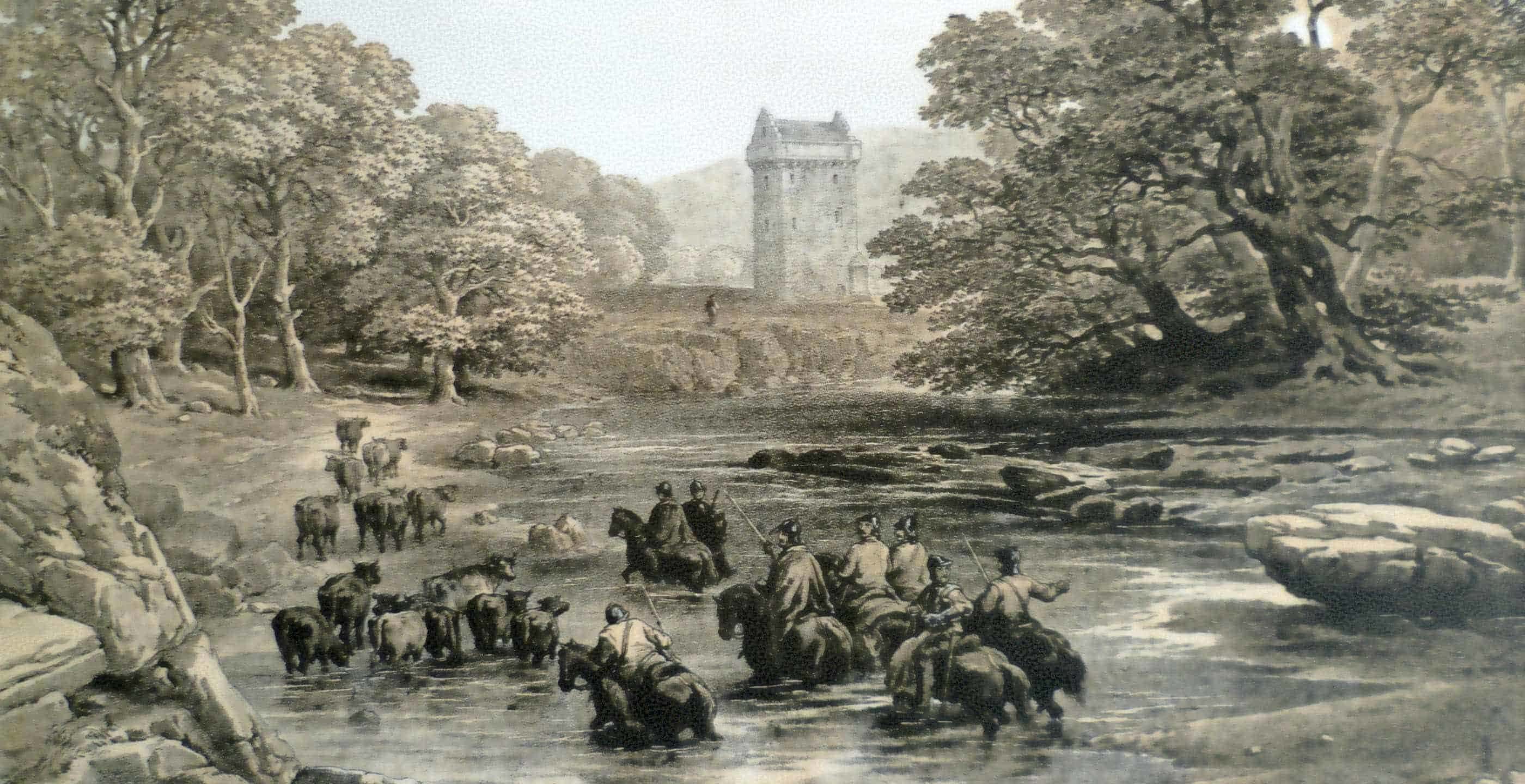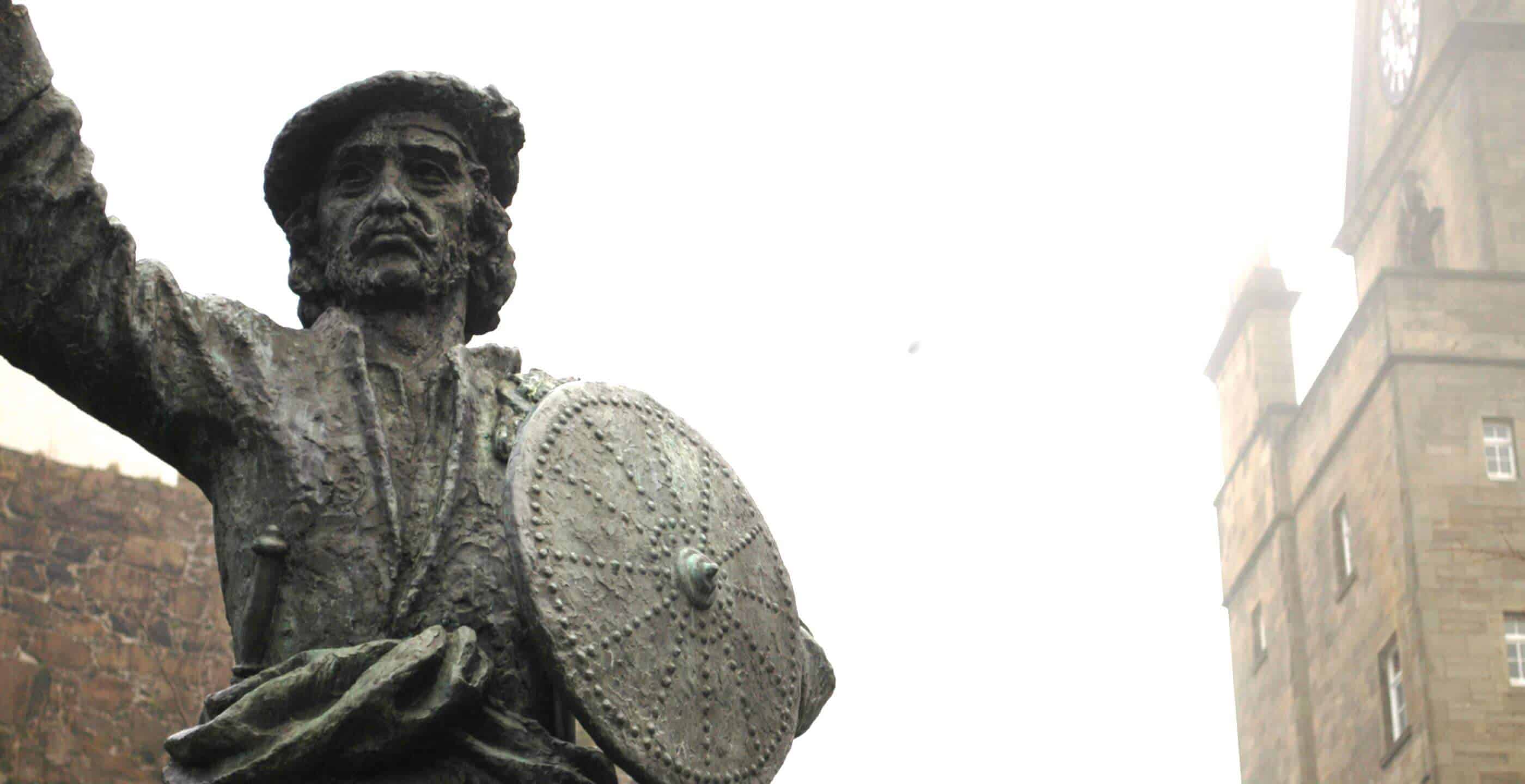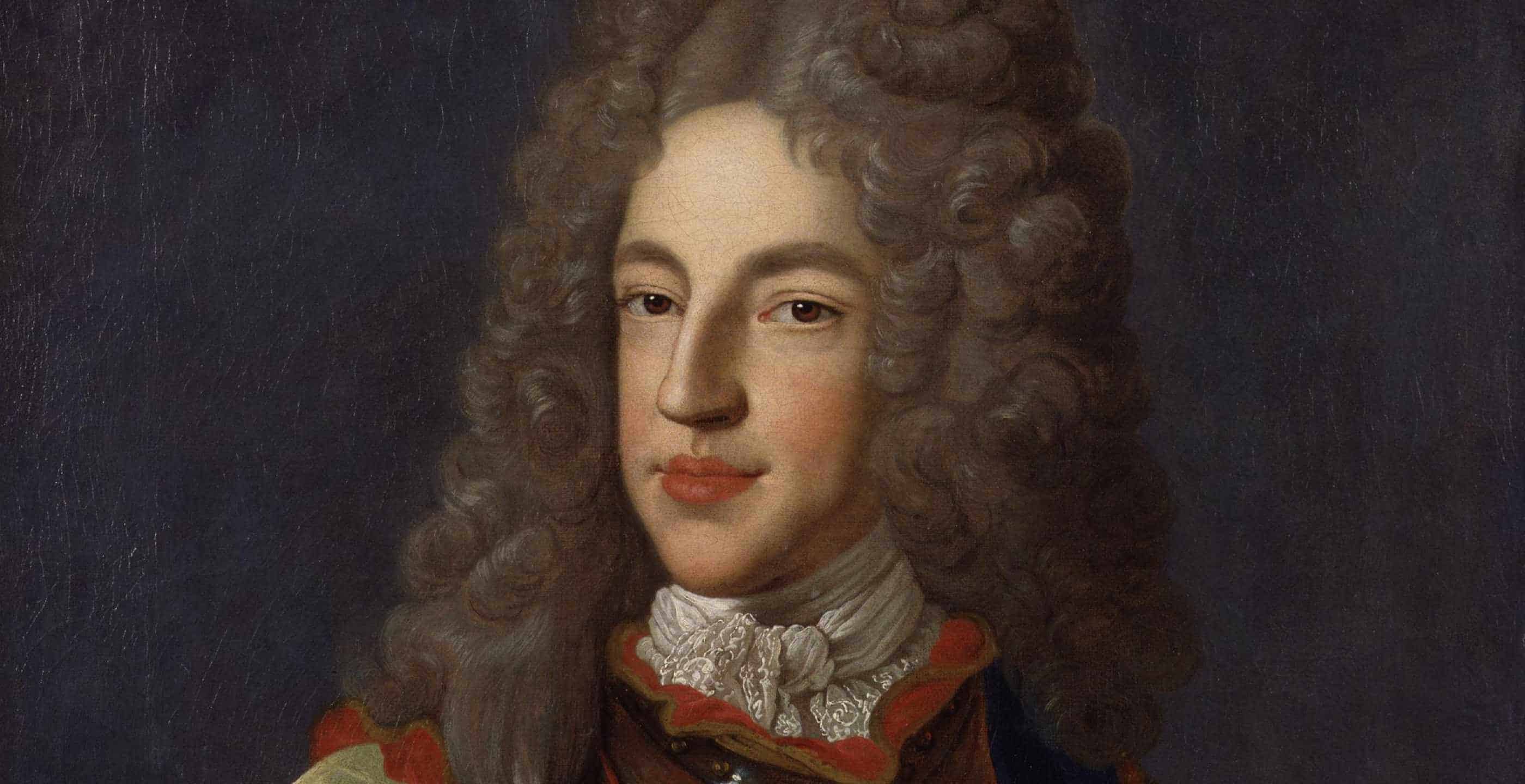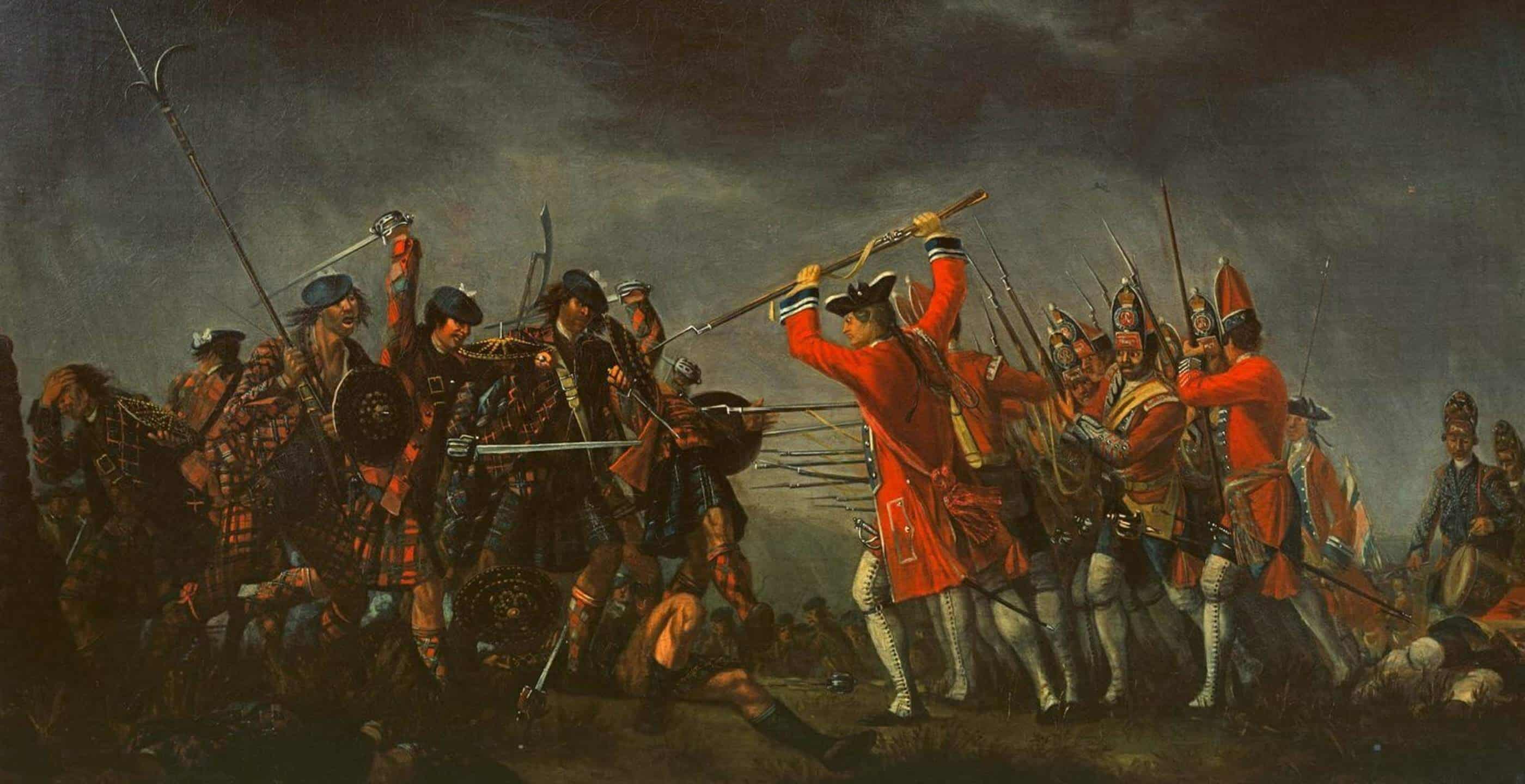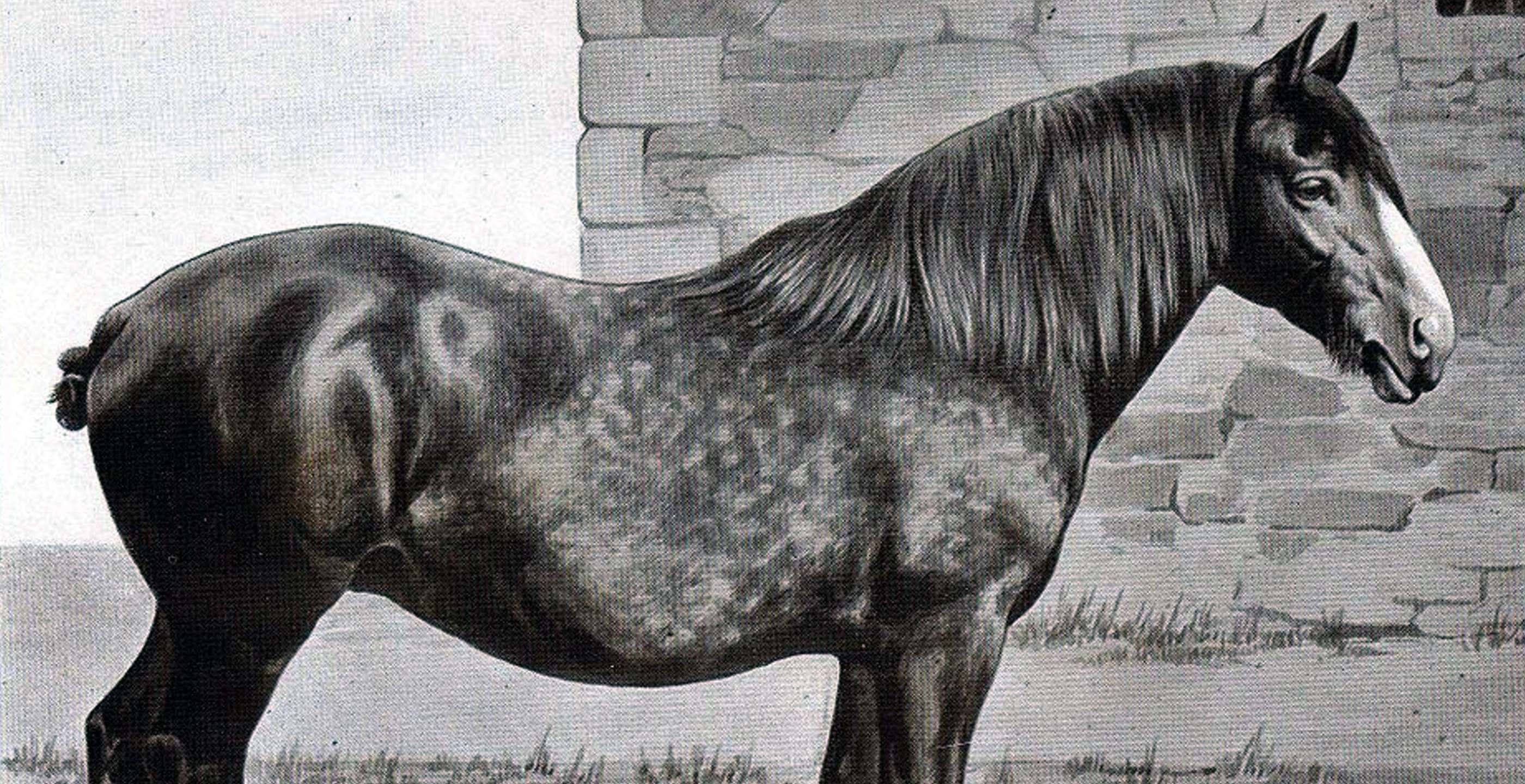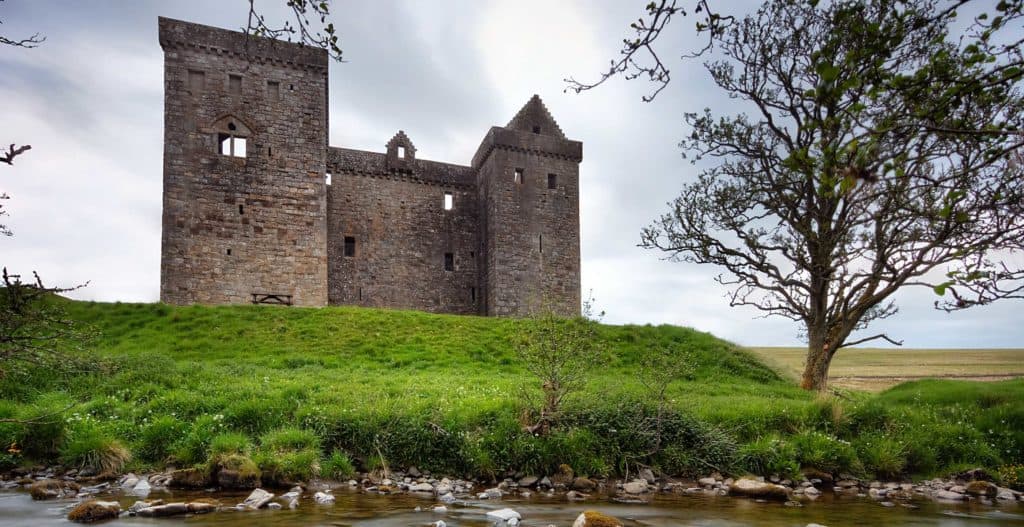The little Border burghs of Scotland were always the first places to feel the onslaught of the English invaders. They celebrate their continuing existence with a flamboyant ceremony called the ‘Common Ridings’, an event that marks the right of the common people to the common land.
One of the oldest takes place on the last Friday in July at Langholm, Dumfries-shire.
Langholm Fair and Common Riding begin when horsemen gather in the square, and the Provost (Major), presents colours to the young man chosen as the Cornet for the year.
After the ‘Cryer’ proclaims the town’s right to cut peat and bracken on the commons, the Cornet, accompanied by several dozen other riders, charges his horse up a steep hill known as the Kirkwynd.
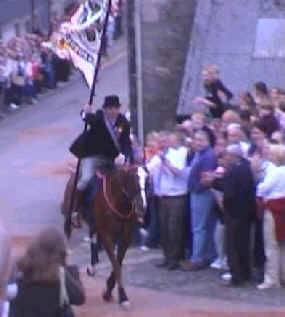
At the top of the hill these riders follow a centuries-old route, stopping at various points to dig peat and pull bracken.
Meanwhile in the town, processions march behind symbols: a fish, nailed to a Barely Bannock (a large scone), a crown made of plaited sweet williams and huge thistle grown specially for the occasion.
The Cornet and his party return to the square for a second proclamation by the Cryer.
He proclaims:
‘So now I will conclude and say nae mair,
And if ye’re pleased I’ll cry the Langholm Fair’.
This corner of Dumfries-shire was home to the Armstrong clan, who were feared outlaws and cattle-raiders who raided both sides of the Border when the moon was right.
The Armstrong’s had a phrase peculiar to their clan “There will be moonlight again”, and it had considerable meaning – a raid was imminent!
It is perhaps appropriate that the first man to set foot on the moon, Neil Armstrong, the astronaut, is a descendant of the Armstrong’s of Mangerton.
Neil Armstrong was made a freeman of Langholm when he visited the town in 1972 during his world tour.
He certainly has the right to repeat the family phrase!
Photo © D. Harkness 2002
More information and photos here
